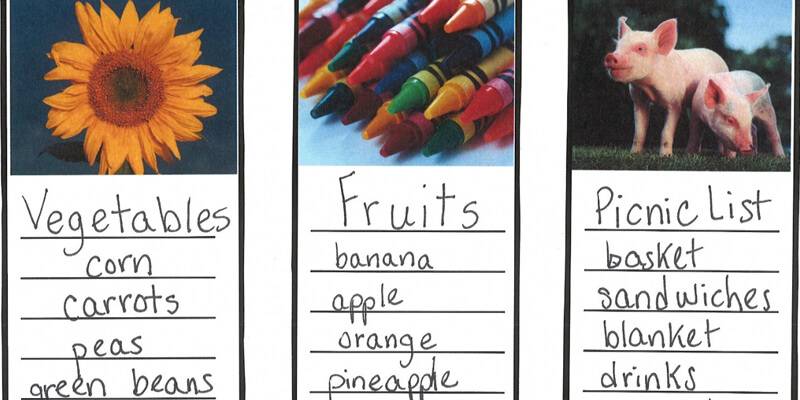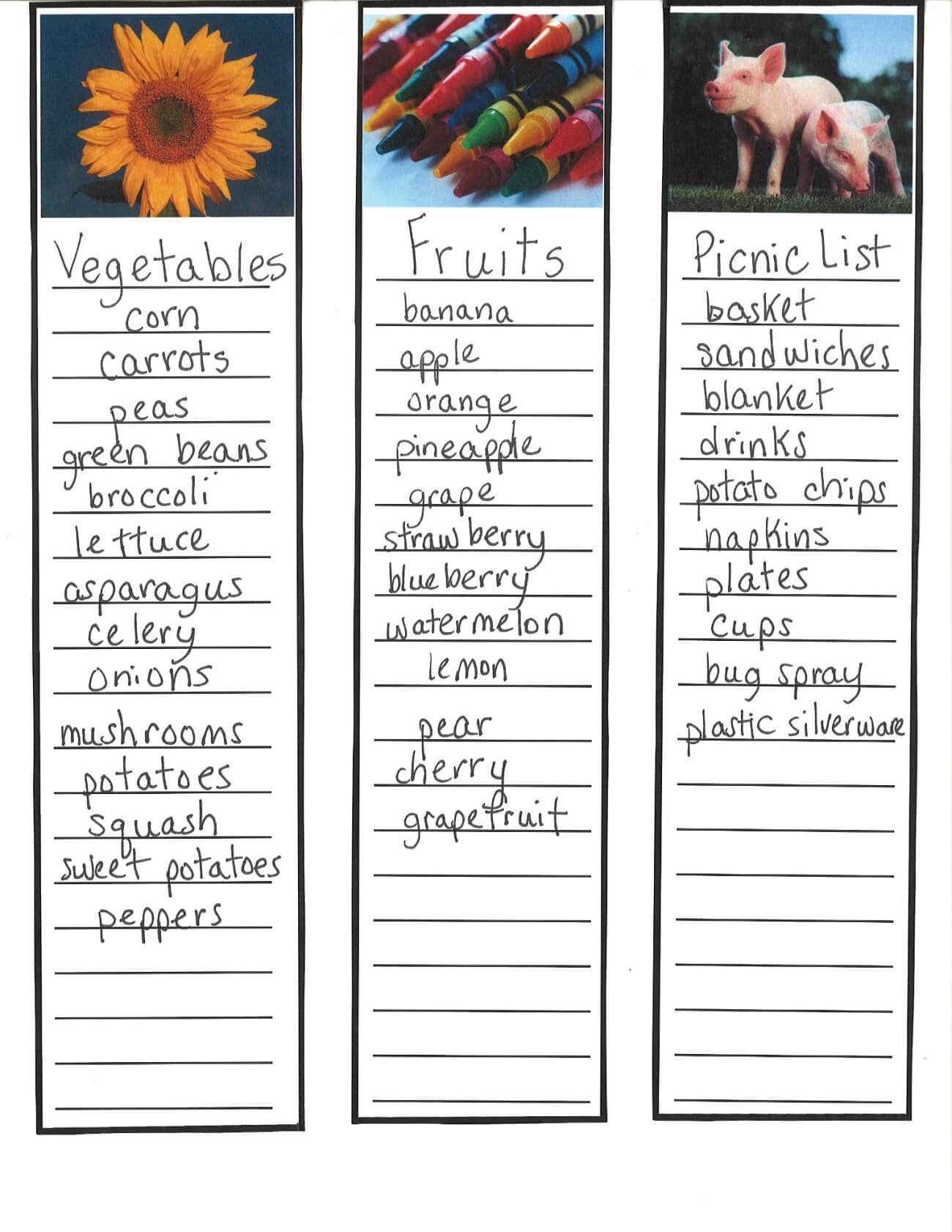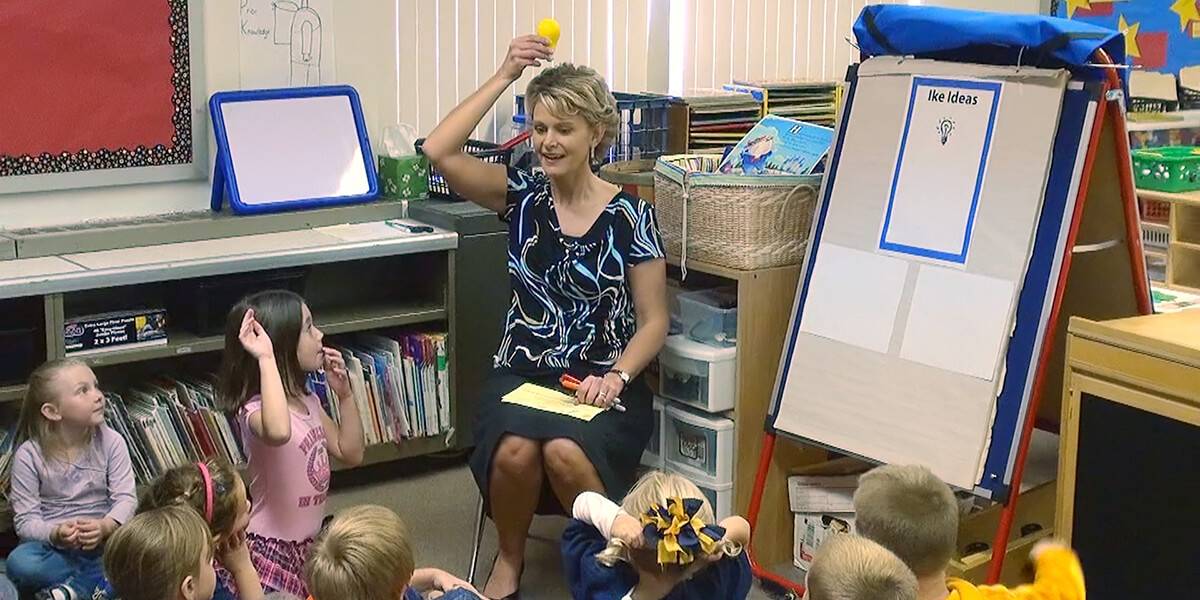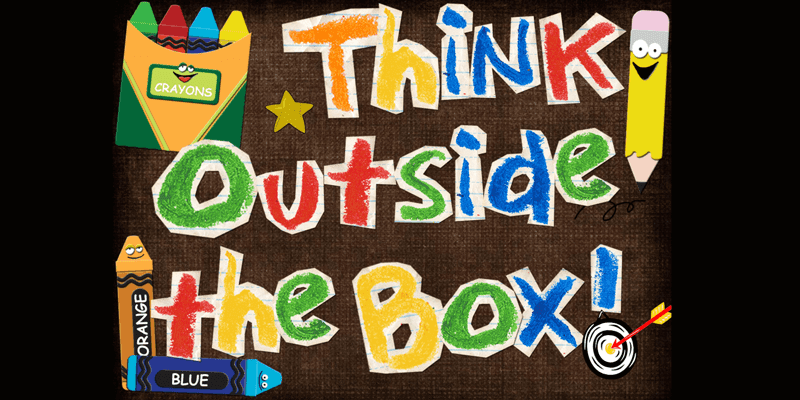Learning Center
writing
Target list-making as a writing genre
april 14, 2017

Before early writers create sentences, they write words. Instead of turning those few words into a simple sentence, encourage students to write with more details, more words and create more powerful lists.
List writing has many benefits, but one of its primary side effects is that students can focus on specific words and specific details while managing only phonics and spacing. Without the pressure to write whole sentences, students can let go of sentence capitals and end marks. It’s hard to juggle all these skills at once.
List-writing units of study
Kindergarten teachers Kim Swoveland and Cindy Perdue emphasize listing with their Wilbur Wright Elementary students:
Notice lists at school.
Then, Kim and Cindy encourage students to notice various lists within the classroom: class lists, lunch menu lists, word wall lists, month lists (calendar), color lists, number lists, shapes lists, school supply lists, Christmas lists, etc.
Make lists at school.
After studying several lists as anchor paper examples, Kim and Cindy then have students practice making lists on various topics: picnic lists, beach lists, fruit lists, vegetable lists, animal lists, clothing lists, etc. These could be done as a whole class, in small groups, as partners or within individual writing activities.
Use lists for sorting.
While continuing their list-making experiences, Kim and Cindy also work on teaching students categorization and math standards. They work in pairs to make lists of things in the classroom that are circle shaped, square shaped, rectangle shaped, and triangle shaped. They list the furniture in the classroom, things that make noise, things that are red, blue, yellow, green, orange, purple, black, white, gray, brown, etc.
List-writing units of study—at home
Kindergarten teachers Kim Swoveland and Cindy Perdue encourage students to create lists at home:
Make lists at home.
Kim and Cindy first talk to students about how their family members write down what they are going to do today, stores to go to, items to buy at the grocery, things they need to plan a party, etc. They discuss why people write lists, what they write it on (list paper, sticky notes, lined paper), what lists look like (1-2 words in a line, numbered items, etc.).
Assign lists for home.
Kim and Cindy encourage list-making activities at home. They assign a different type of list to each child/family. These lists might include items found in the refrigerator, bathroom, kitchen, or garage. They make lists of food they eat for supper, for breakfast, for snacks, or for dessert. They make lists of names of neighbors or family members. They list their favorite places (restaurants) to eat, favorite places to visit, favorite movies, or favorite TV shows.
After all this initial listing, then move into more meaningful content. Students can focus on expository writing and make lists of things they know about:
- Make a list of what they need to bring to school each day.
- Make a list of their morning routines.
- Make a shopping list of items needed to make a particular snack.
- Make a list of the things they are going to do over the weekend.
Oak Trace (Westfield, IN) kindergarten teacher Tonya Gill provides simple list paper that allows her youngest writers to make simple illustrations to support their word lists.
Turn lists into how-to writing
Itemized lists can easily turn into how-to lists. First grade teacher Linda Schmidt starts by drawing simple illustrations vertically to keep with the long and skinny list format. Then she writes short and simple directions for how to execute each task. While writing, include numbers for each step in the sequence. Remember to model a topic your students can’t copy. For example, a teacher’s how-to list might be directions on doing the laundry.
This eventually leads to discussion on the trait of organization. Introduce how writers can use sequence words (e.g. first, second, third, then, last, etc. ) as an alternative to 1., 2., 3., etc.
With state writing assessments a hot topic right now, primary teachers can know they are working toward the goal, too. The skills young writers are learning now become the same skills they utilize when creating pre-write lists before writing to a state prompt in the upper grades.





